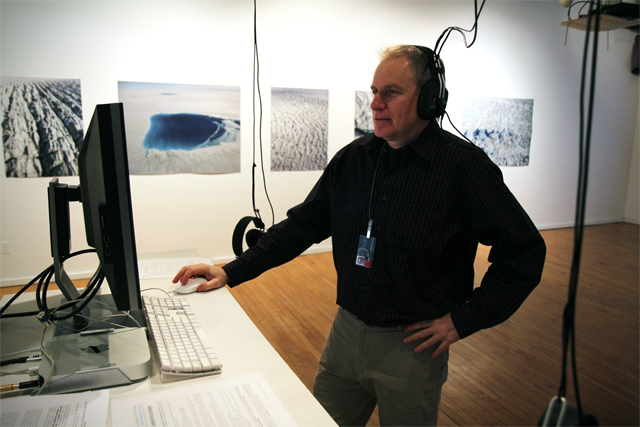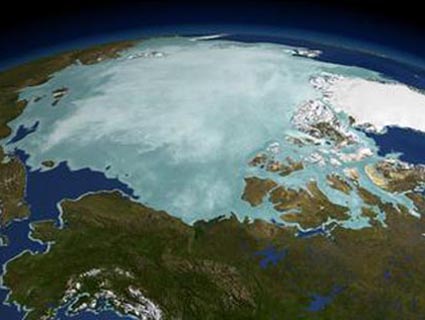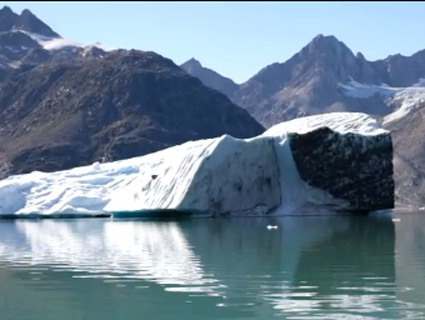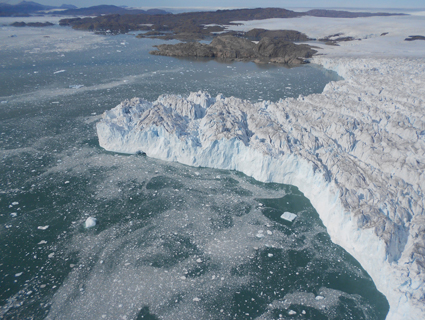
Jonathan Perl listens to one of his custom-built climate "sonifications."Tim McDonnell/Climate Desk
If a glacier melts in the Arctic and there’s no one around, does it make a sound? Jonathan Perl thinks it does. The City College of New York musicologist was asked by climatologist Marco Tedesco to translate data records on Greenland’s melting ice into sound. The result is a series of “sonifications,” on display through next week at CCNY’s POLARSEEDS exhibit, that combine quantitative data with music to create an audio snapshot of climate change. Steady, long-term changes that are invisible to the eye jump out to the ear, Perl says. Case in point: When melt records came in for 2012’s record-breaking summer, Perl had to completely rebuild his soundscapes. “The data is so much off the charts in 2012 that the sounds just explode, and all the other sounds are so much mellower in comparison. That showed me there’s this huge, unmistakable change that is so obvious when you listen to it.”
Coming soon: Representing climate change through graphic design and video games.
See also: What happens when climate science meets the art gallery? Take a tour of POLARSEEDS with climatologist Marco Tedesco.











